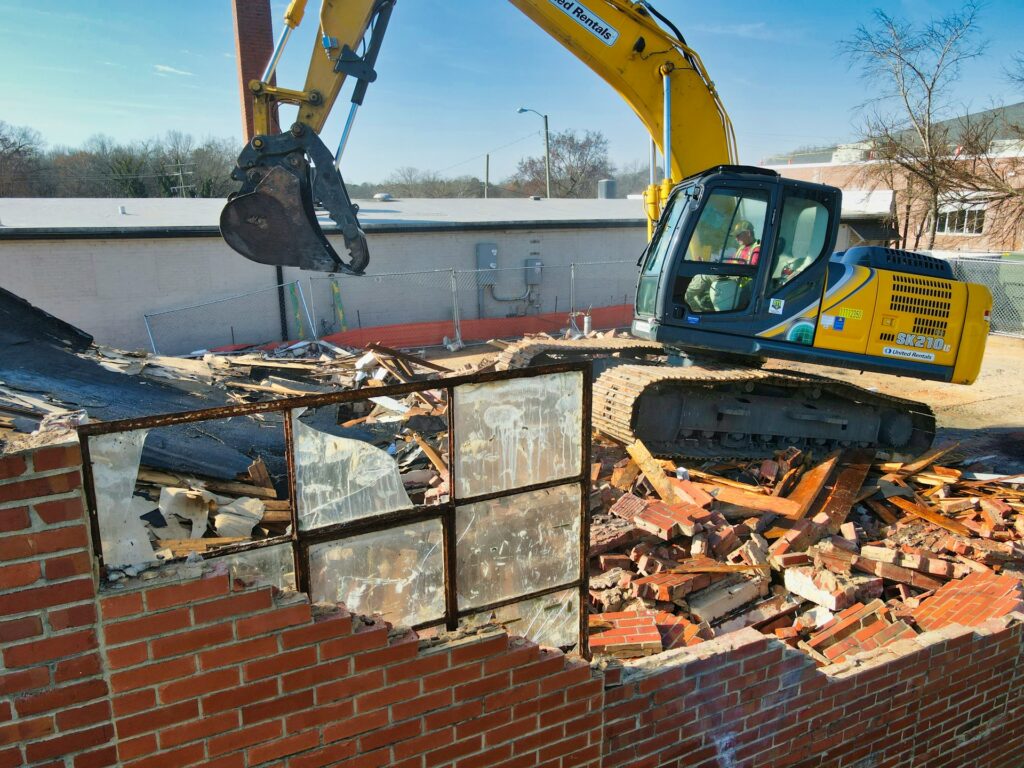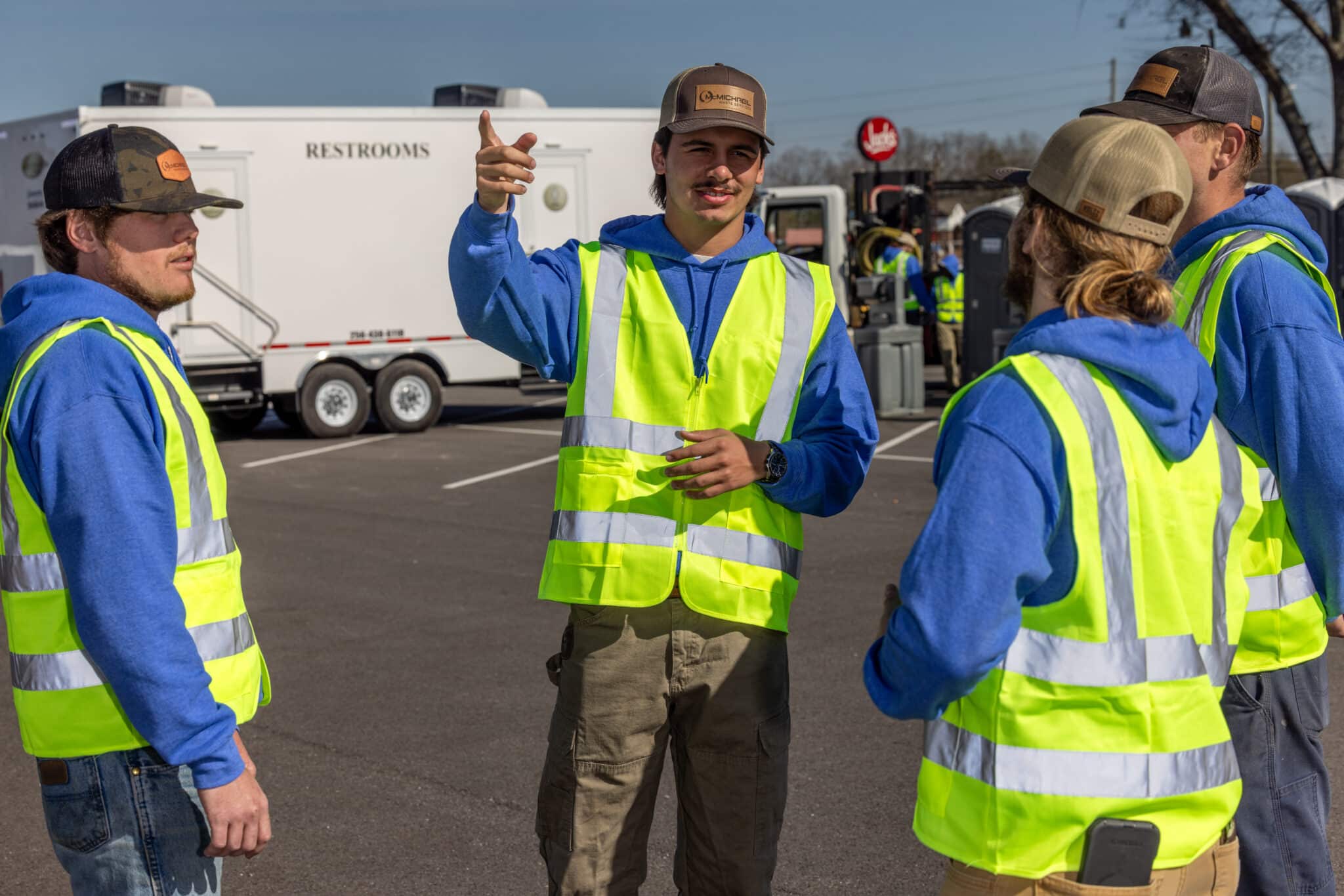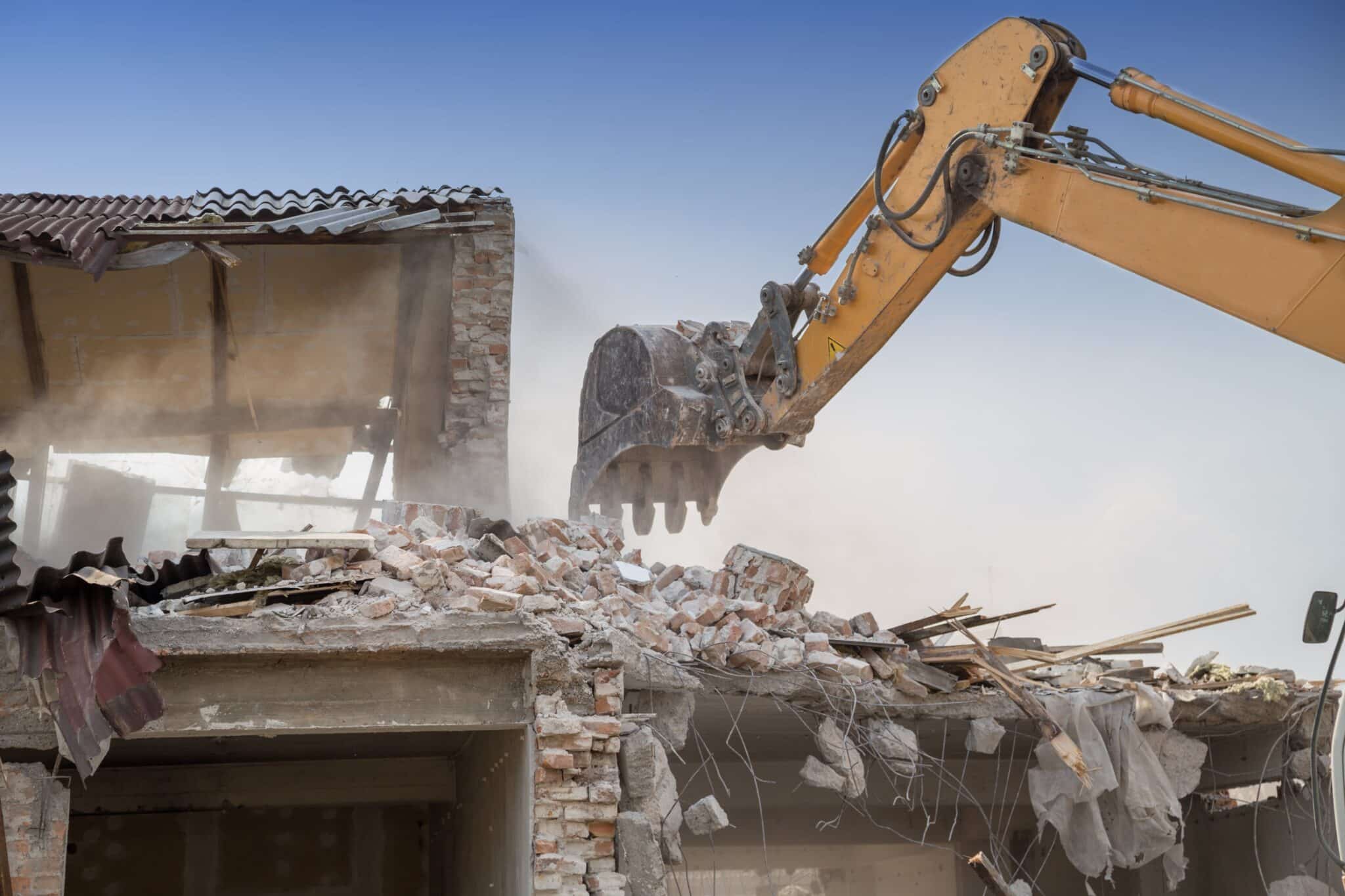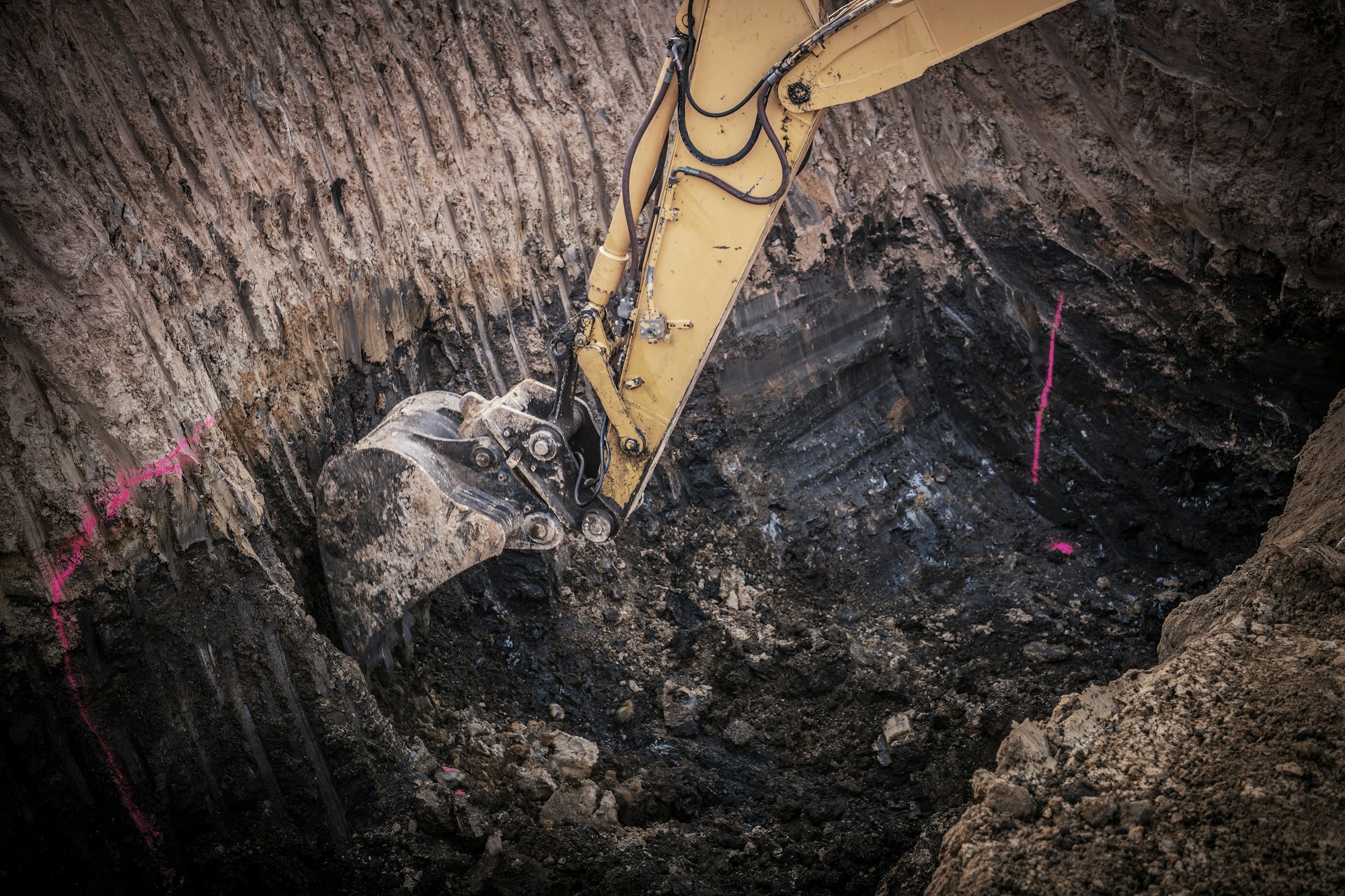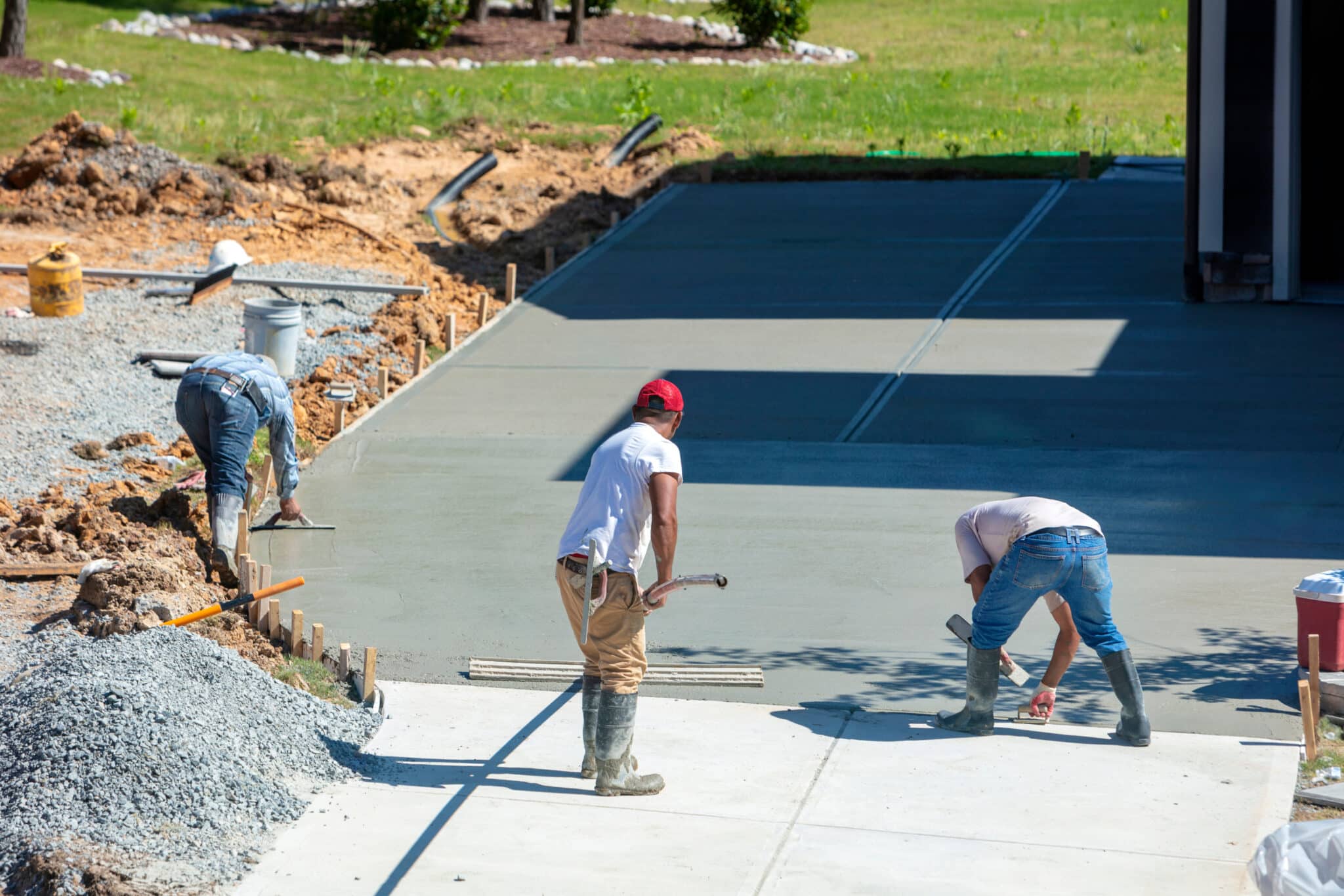Complete demolition is about tearing down entire structures. But there’s a lot more to it than just breaking walls and floors. It’s a detailed process that demands careful planning and execution. Demolition crews not only bring down buildings but also help pave the way for new beginnings on the same ground. This makes demolition a key part of urban development and renewal. Despite its significant role in construction, demolition doesn’t stop at making room for new structures. It’s equally important to consider what tearing down a building means for the environment.
Understanding the environmental impact of demolition can alter how we view the whole process. Each act of destruction can have lasting ecological effects. It’s not just about the dust clouds or the noise; it’s about what happens after the dust settles. Knowing how demolition affects the Earth pushes us to rethink the methods we use and encourages adopting more eco-friendly practices. We must ask ourselves how demolition could be kinder to our planet and what sustainable methods might look like in the future.
Understanding Complete Demolition
When we talk about complete demolition, we refer to the total tearing down of a building or structure. This process involves a systematic approach. First, experts assess the building to plan how to bring it down safely. They analyze structure, materials, and surrounding areas to understand potential challenges. Once they have a plan, crews use a mix of heavy machinery and controlled techniques to ensure safety. Equipment like wrecking balls, bulldozers, and high-reach excavators often play a big role in this process. These machines make it possible to bring down large buildings efficiently.
A demolition project isn’t as simple as swinging a wrecking ball. Every building poses different challenges. Teams must ensure the safety of workers and people nearby. They must navigate power lines, underground pipes, and nearby structures. This means each demolition requires a detailed plan, ensuring risks are minimized.
While the idea of tearing down entire buildings might seem straightforward, each project is unique due to the diverse methods and machinery used. Managing the debris is another big task. This is where the importance of demolition expertise comes into play. A professional service ensures safety and efficiency, all while giving thought to environmental concerns. Understanding these processes highlights the skill and organization required to complete a demolition effectively and responsibly.
Environmental Impact of Demolition
– Waste Generation: Demolition generates a significant amount of waste, including concrete, wood, and metals. Managing this waste effectively is crucial to prevent landfills from overflowing and to reduce environmental harm.
– Air and Noise Pollution: During demolition, dust and debris can create air quality issues for surrounding areas. Noise pollution is also a concern, affecting local communities and wildlife.
– Impact on Ecosystems: The demolition process can disturb local ecosystems. Plants and animals may be displaced, and local water sources can become contaminated if not properly managed.
In looking at the bigger picture, it’s clear that demolition doesn’t just shake the ground it stands on; it ripples outward to touch many aspects of our environment. Understanding these impacts encourages a thoughtful approach to demolition, guiding communities toward more sustainable practices. Opting for less invasive methods and being conscious of the aftermath can make a big difference in the environmental footprint.
Sustainable Practices in Demolition
Implementing sustainable practices during demolition is a step forward for the environment. Various techniques can help lessen the environmental impact. One way is by prioritizing the recycling and repurposing of materials. Instead of sending everything to a landfill, materials like steel, concrete, and wood can find new life in other projects. This reduces waste and conserves resources. By implementing smart sorting at the demolition site, reusable materials are separated from true waste, ensuring they are recycled effectively.
Techniques to Minimize Impact:
– Deconstruction: Carefully taking apart buildings to preserve valuable materials.
– Selective Demolition: Removing only the necessary parts of a building.
– Use of Non-Explosive Methods: Using controlled mechanical processes instead of explosives to minimize dust and debris.
Adopting eco-friendly methods also includes using equipment and processes that produce less dust and noise. These practices help protect air quality and lessen the impact on nearby communities. Instead of traditional methods, innovative solutions like “silent” machinery and dust suppression techniques can offer cleaner demolition options. Furthermore, using local waste management solutions for debris cuts down on fuel use and emissions associated with transporting waste over long distances.
The Role of Professional Services
Employing professional services for demolition not only ensures the job is done correctly but also that it meets safety and environmental standards. Trained demolition experts bring valuable knowledge and skills. They understand the intricate planning required and are ready for any unexpected challenges. Professional teams come equipped with the latest technology and equipment to perform the task efficiently and safely.
Benefits of Professional Oversight:
– Comprehensive Safety Measures: Professionals follow stringent safety protocols to protect workers and the surrounding area.
– Environmental Compliance: Ensures adherence to environmental regulations and standards.
– Site Restoration: Clearing and preparing the site for future development sustainably.
Using professional services means you not only protect the immediate area but also the larger community. With their comprehensive knowledge, they can mitigate potential risks, ensuring operations comply with all necessary regulations and learning the best sustainable practices. This support is instrumental in handling unexpected situations that could arise during a project, reinforcing both safety and efficiency.
Making Informed Decisions for Your Project
When choosing demolition services, making informed decisions is crucial. Before selecting a contractor, consider their experience and how they handle the environmental aspects of demolition. Ask potential contractors about their methods and strategies for waste management. Understanding what techniques they use to minimize environmental impact is essential.
Key Questions to Ask:
– How do you handle waste, and what percentage is recycled?
– What sustainable practices do you implement during demolition?
– Can you provide examples of past projects with positive environmental outcomes?
Being proactive in your choice can lead to better project outcomes and ensure that your demolition project aligns with environmentally friendly goals. Think about the long-term effects your project could have and aim for choices that prioritize sustainability. This approach helps preserve the environment and supports the well-being of your community.
Final Thoughts on Demolition’s Environmental Impact
In considering demolition’s impact, it’s important to weigh both the short-term gains and the long-term environmental consequences. Sustainable practices, the expertise of professional services, and informed decision-making all play significant roles in minimizing harm. Striving for greener demolition methods reflects a commitment to responsible development and urban renewal. Let’s be mindful of how we shape the world, ensuring each action harmonizes with nature for a more sustainable future.
If you want your next build to start off on the right foot, consider how using complete demolition methods can support both progress and the planet. McMichael Waste Services is here to help you take a smarter, more eco-conscious approach to clearing the way for what’s next.


